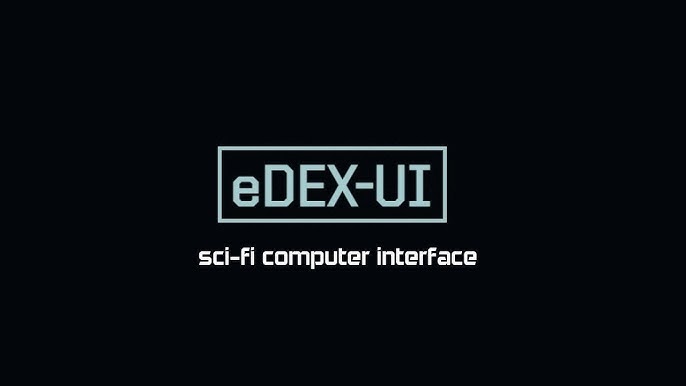In the modern digital landscape, terminal emulators play a vital role in enhancing productivity, customization, and visual engagement for developers and system administrators. While many options exist, eDEX UI quickly became one of the most recognized terminals due to its futuristic design, immersive interface, and interactive dashboard features. This unique project transformed the idea of what a terminal could look like, making it popular among coders, system enthusiasts, and sci-fi lovers.
The question many ask is: Who created eDEX UI, and when was it first released? The history behind its development is just as fascinating as its functionality. Unlike many minimalistic terminal emulators, eDEX-UI leaned heavily into aesthetics inspired by science fiction movies while maintaining practical tools for real-world usage. This blend of function and style made it stand out in the open-source community.
By exploring its creator, launch timeline, technical foundation, and user adoption, we can gain valuable insights into why eDEX UI became an iconic tool in the world of open-source software. This article dives deep into its origin, features, impact, and ongoing relevance.
Origins of eDEX UI
The Creator Behind the ProjecteDEX-UI was created by GitHub developer “GitSquared” (Gabriel Romuald), a French software engineer known for contributing to open-source projects. His vision was to design a terminal that broke away from conventional flat UI designs and instead offered a cinematic feel reminiscent of the movie Tron: Legacy.
Motivation for Development
Gabriel’s motivation stemmed from his desire to merge aesthetics with functionality. He wanted to craft a terminal that not only served professional needs but also gave users an immersive experience. This approach resonated with developers who enjoy stylized interfaces while working with code.
When Was It First Released?
The first stable release of eDEX UI was on December 29, 2017. It quickly spread across the developer community through GitHub, earning attention for its unique visuals and sci-fi-inspired design. The release marked the beginning of a trend toward highly customizable terminal emulators.
Features That Defined eDEX UI
Sci-Fi Inspired Design
eDEX UI stood out with a full-screen design, neon color schemes, and futuristic layouts. This sci-fi aesthetic gave it a unique identity compared to traditional command-line terminals.
Multi-Platform Compatibility
It supported Linux, Windows, and macOS, making it accessible for developers regardless of their preferred operating system. Its Electron-based framework ensured cross-platform stability.
Interactive Dashboards
Beyond being a terminal, eDEX UI included widgets displaying system stats, file navigation, and keyboard input visualizers. These interactive dashboards elevated user engagement.
Full-screen immersive terminal experience
- Real-time system monitoring tools
- Cross-platform availability
- Futuristic customizable themes
Technical Foundation of eDEX UI
Built on Electron
The project was built using Electron, a popular framework for cross-platform desktop apps. This allowed the developer to use JavaScript, HTML, and CSS to create a visually appealing interface without sacrificing compatibility.
Integration With Node.js
Node.js played an important role by enabling real-time data processing within the UI. This allowed system stats to update continuously while commands were executed in the terminal.
Performance Considerations
While visually stunning, eDEX UI required significant system resources compared to lightweight terminals. Users needed a modern machine to run it smoothly without performance issues.
Community Adoption and Reception
Early Popularity
After its release in 2017, eDEX UI quickly gained traction on GitHub, amassing thousands of stars and forks. Developers praised its originality and futuristic design.
Criticism and Limitations
Despite its popularity, some users criticized the application for being resource-heavy. Traditional terminal users often preferred lightweight alternatives for efficiency.
Impact on Open Source Culture
Even with criticisms, eDEX UI inspired new projects and themes across open-source platforms. Its bold design encouraged developers to explore aesthetics in ways they had previously ignored.
High GitHub star rating
- Large community of contributors
- Influence on terminal design trends
- Legacy and Discontinuation
End of Official Development
In 2021, the project was officially archived. The creator announced that he would no longer maintain eDEX UI due to time constraints and evolving priorities. This marked the end of active updates.
Forks and Community Versions
Although discontinued, forks of eDEX UI still circulate in the developer community. Some enthusiasts maintain modified versions with additional features and bug fixes.
Influence on Future Tools
Even in its discontinued state, eDEX-UI’s design continues to inspire modern terminal emulators and dashboard-style interfaces for developers. Its futuristic legacy remains strong in open-source design culture.
Comparison With Other Terminals
Traditional Terminal Emulators
Compared to traditional terminals like GNOME Terminal or Windows Command Prompt, eDEX UI was far more resource-intensive but offered a visually stimulating experience.
Alternatives With Style
Applications such as Hyper and Terminus followed similar Electron-based approaches, offering customizable UI elements, though not as immersive as eDEX-UI.
Where It Stands Today
While not actively developed, eDEX UI still stands as a cult favorite among tech enthusiasts who value aesthetics in their workflow. It remains a nostalgic reminder of creativity in open-source design.
Comparison with GNOME Terminal
Influence on Hyper and Terminus
Nostalgic value for developers
FAQs About eDEX UI
Who created eDEX UI?
It was created by French developer Gabriel Romuald, known as GitSquared on GitHub.
When was eDEX UI first released?
The first stable release came on December 29, 2017.
Is eDEX UI still maintained?
No, official development ended in 2021, though forks still exist.
Which platforms support eDEX UI?
It works on Linux, Windows, and macOS.
Why was eDEX UI discontinued?
The developer stopped maintenance due to time constraints and resource considerations.
Is eDEX UI lightweight?
No, it requires more system resources than traditional terminals.
Conclusion
The story of eDEX UI is one of creativity, innovation, and influence in the world of open-source software. Created by Gabriel Romuald and released in 2017, this futuristic terminal redefined how developers engage with their environments. Though discontinued in 2021, it continues to inspire and influence design approaches across terminals and dashboards. Its legacy reminds us that software can be both functional and visually captivating, making coding a more immersive experience.



